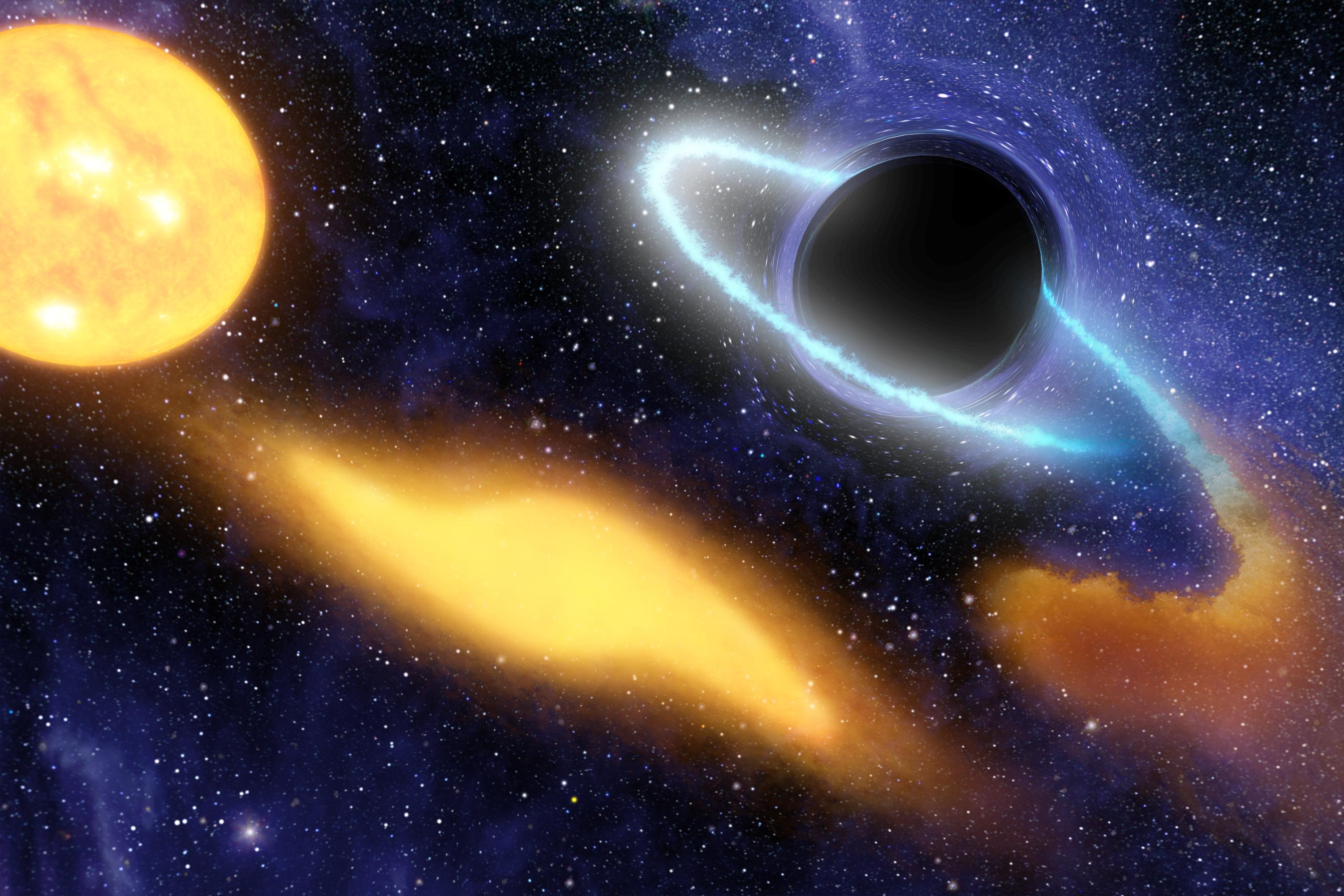After a massive star undergoes a supernova, what is left of the star's core collapses in on itself in an implosion. The core of the new black hole is called a "singularity". It is an incredibly small object with an incalculably large, almost infinite density, giving it an incredible gravity as well. Not very much is known about singularities since it is not yet possible to observe black holes up close, but scientists suspect its likely that the laws of physics as we know them break down close to the singularity!
Another key component of the black hole is the "event horizon". This is not actually a physical object, but an invisible boundary. Past this point, the velocity a piece of matter being drawn in by the black hole's gravity needs in order to escape is equal to or more than the speed of light. But since nothing in the universe can travel faster than light, the event horizon functions as the "point of no return".
Once formed, a black hole can grow even larger by absorbing the matter drawn in by its gravity. It can even "eat" other black holes, merging and producing gravitational waves.
